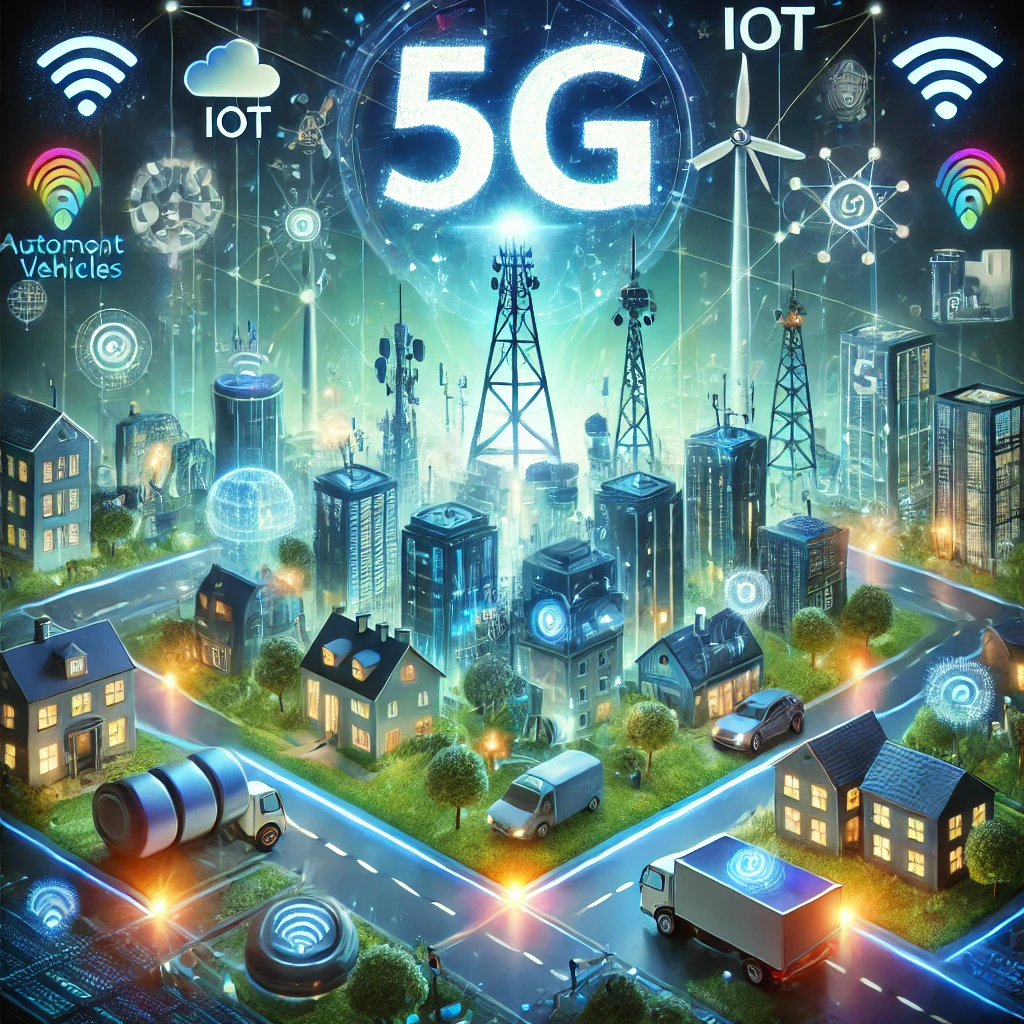The emergence of 5G technology signifies more than just enhanced internet speeds. It acts as a revolutionary catalyst, transforming industries and accelerating the growth of the Internet of Things (IoT). The combination of 5G and IoT fosters a mutually beneficial relationship, enabling smooth connectivity, smarter devices, and more efficient systems.
This article delves into the fusion of 5G and IoT, examining its applications across different sectors, the challenges it faces, and its potential global impact.
Understanding 5G and Its Impact on IoT
Fundamentals of 5G Technology
5G represents the next generation of mobile network technology, offering:
- Faster Speeds: Achieving speeds up to 100 times faster than 4G, facilitating real-time data transfer.
- Lower Latency: Minimizing communication delays, ensuring instantaneous responses.
- Greater Capacity: Supporting millions of connected devices within a single area.
The Essence of IoT
The Internet of Things encompasses a vast network of devices that communicate and exchange data over the internet. These devices range from home automation gadgets to industrial sensors, all necessitating dependable connectivity.
5G enhances IoT capabilities by:
- Supporting a large number of connected devices.
- Facilitating real-time processing for applications requiring minimal latency.
- Improving energy efficiency, thereby extending the lifespan of IoT devices.
Key Applications of 5G-Enhanced IoT
Smart Cities
5G and IoT are fundamental to smart city initiatives, enabling more efficient management of resources, traffic, and infrastructure.
Examples:
- Adaptive traffic lights responding to real-time traffic conditions.
- Waste management systems with IoT-enabled bins signaling when they need emptying.
- Improved public safety through connected surveillance systems and emergency response networks.
Healthcare
The healthcare sector greatly benefits from the integration of 5G and IoT, offering faster and more accurate services.
Examples:
- Remote surgeries using robotic systems, facilitated by low latency.
- Continuous patient monitoring through IoT-enabled wearable devices.
- Real-time data sharing between devices and healthcare providers for faster diagnoses.
Industry 4.0
In manufacturing and logistics, 5G enhances IoT’s role in automation, predictive maintenance, and supply chain optimization.
Examples:
- Smart factories with IoT sensors monitoring equipment to prevent downtime.
- Precise task coordination by autonomous robots.
- Real-time tracking of goods in transit for better logistics management.
Autonomous Vehicles
5G’s ultra-reliable connectivity is crucial for the adoption of autonomous vehicles, which rely on IoT for safe operation.
Examples:
- Real-time communication between vehicles and infrastructure (e.g., traffic lights, road sensors).
- Enhanced navigation systems with the latest traffic data.
- Immediate response collision avoidance systems.
Agriculture
Smart farming technologies powered by 5G and IoT enhance precision agriculture, increasing yields and reducing waste.
Examples:
- IoT devices monitoring soil moisture, weather conditions, and crop health.
- Autonomous tractors and drones for planting, spraying, and harvesting.
- Livestock tracking and health monitoring through connected devices.
Challenges in Integrating 5G and IoT
Despite their immense potential, the expansion of 5G and IoT faces several challenges:
- Security Concerns: The increase in connected devices raises the risk of cyberattacks, making IoT network and data security a top priority.
- Infrastructure Costs: Building 5G networks requires substantial investment in infrastructure, particularly in rural and underdeveloped areas.
- Standardization Issues: IoT devices from various manufacturers often lack standardized protocols, leading to compatibility problems. Energy Consumption
Although 5G technology is more energy-efficient compared to older generations, the large number of IoT devices might still put a strain on energy resources.
Privacy Concerns
The ongoing data collection by IoT devices brings up significant issues regarding user privacy and who owns the data.
The Future of 5G and IoT
1. Expanding IoT Ecosystems
With 5G, IoT ecosystems are set to grow rapidly, connecting billions of devices within intelligent networks.
2. Enhanced AI Integration
Integrating IoT data with AI will enhance decision-making processes in various fields, from predictive healthcare analytics to automated supply chain operations.
3. Sustainable Solutions
IoT powered by 5G can support sustainability efforts through more energy-efficient devices, better resource management, and lower emissions in sectors such as transportation and manufacturing.
4. Global Connectivity
As 5G networks reach more areas, even remote regions will benefit from IoT, helping to close the digital gap and promote worldwide innovation.
Conclusion
The fusion of 5G and IoT is transforming connectivity, enhancing efficiency, and driving significant innovations across different industries. By tackling current issues and maximizing the capabilities of these technologies, businesses and governments can create a more interconnected, sustainable, and intelligent environment. As 5G continues to spread globally, the opportunities for IoT development are virtually boundless, paving the way for technology to become an integral part of daily life.

